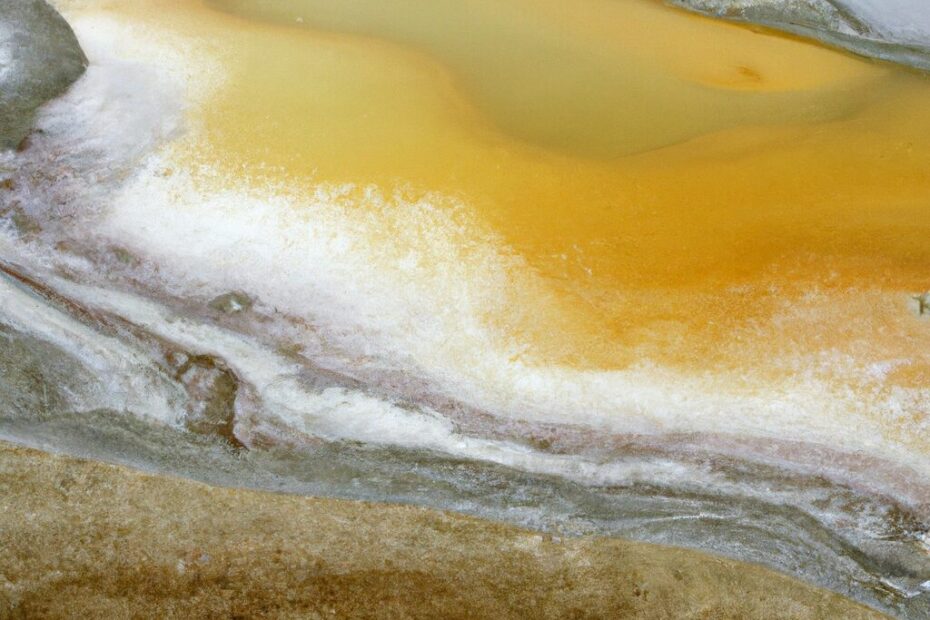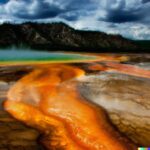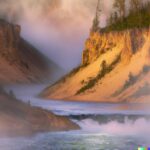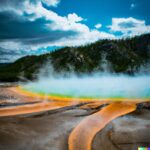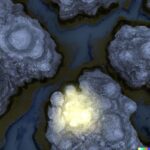When planning a trip to Yellowstone National Park, one of the first things to consider is the best time to visit. With varying weather conditions, crowds, and activities available throughout the year, choosing the right time can make a huge difference in your experience.
In this article, we will explore the peak, shoulder, and off-seasons, as well as the weather, crowds, and activities you can expect during each season. Whether you’re a summer explorer or a winter enthusiast, we’ve got you covered with all the information you need to plan your perfect Yellowstone adventure.
What is the Best Time to Visit Yellowstone National Park?
Determining the best time to visit Yellowstone National Park involves considering the seasons, weather conditions, wildlife sightings, available activities, and crowd levels.
-
Visiting Yellowstone National Park during the summer months from June to August offers pleasant weather for outdoor activities like hiking and wildlife viewing. This is also the peak tourist season, leading to crowded attractions and higher accommodation rates.
-
In contrast, the park transforms into a winter wonderland from December to February, offering unique experiences such as snowshoeing and cross-country skiing, with fewer crowds but colder temperatures.
-
Spring and fall bring milder weather, with colorful foliage in fall and the possibility to witness animal migrations in spring.
Peak Season (June-August)
During the peak season from June to August, Yellowstone National Park experiences high tourist influx, offering a wide range of activities, but with increased crowds that may impact park entrance availability and lodging options.
This surge in visitor numbers during the summer months transforms Yellowstone into a bustling hub of excitement, with families, nature enthusiasts, and travelers from around the world converging to witness the park’s natural wonders.
Hiking trails become alive with hikers exploring the diverse landscapes, geysers like Old Faithful captivate audiences with their legendary eruptions, and wildlife sightings become more frequent, adding thrill to every visitor’s experience.
The popularity of Yellowstone during this period brings its own set of challenges, as long queues at entrance gates and crowded facilities can sometimes test the patience of even the most seasoned travelers.
To avoid any disappointments, it is advisable to plan ahead and secure park entrance passes and accommodations well in advance, ensuring a smooth and enjoyable visit amidst the peak season bustle.
Shoulder Season (April-May, September-November)
The shoulder seasons of April to May and September to November in Yellowstone National Park offer opportunities to witness diverse wildlife, explore uncrowded hiking trails, enjoy pleasant weather for sightseeing, and benefit from valuable travel tips.
During these times, visitors often experience memorable encounters with bison, elk, wolves, and bears, as the animals become more active. The cooler temperatures make hiking more comfortable, and the fall foliage adds a vibrant touch to the landscapes. With fewer crowds, travelers can immerse themselves in the park’s natural beauty and take in the breathtaking geysers, waterfalls, and canyons at a relaxed pace.
Important travel tips include booking accommodations well in advance and carrying bear spray while hiking for safety.
Off-Season (December-March)
The off-season from December to March in Yellowstone National Park transforms the landscape into a winter wonderland, providing unique opportunities for snowmobiling, adhering to specific park regulations for wildlife safety, and utilizing limited park facilities.
Exploring Yellowstone during the winter months offers enthusiasts the chance to engage in thrilling snowmobile adventures through the snow-covered terrain. As visitors embark on these expeditions, it’s crucial to remember the importance of respecting park regulations to protect the park’s diverse wildlife and ensure the safety of both animals and humans. While some park facilities may be limited during this time, essential services such as ranger stations, visitor centers, and designated rest areas remain accessible to assist visitors in fully experiencing the beauty of Yellowstone in its winter splendor.
What is the Weather Like in Yellowstone National Park?
Yellowstone National Park experiences varied weather conditions throughout the year, with distinct climate patterns influencing temperatures and necessitating specific packing lists based on the seasons of spring, summer, fall, and winter.
-
During spring, Yellowstone transitions from the cold winter to milder temperatures, making it a time of unpredictable weather fluctuations. Spring in the park can bring rainy days, with occasional snow showers still lingering in higher elevations. Packing essentials for this season should include layers to accommodate the varying temperatures and waterproof gear for unexpected showers.
-
As summer arrives, Yellowstone sees warm days with cool nights, perfect for outdoor adventures. Lightweight clothing, sunscreen, and insect repellent are must-haves to enjoy the longer daylight hours comfortably.
Summer Weather
The summer weather in Yellowstone National Park is characterized by pleasant temperatures, facilitating a plethora of outdoor activities, excellent wildlife viewing opportunities, captivating scenic drives, and thrilling outdoor adventures.
With temperatures ranging from the mid-70s to low 80s Fahrenheit during the day, summer in Yellowstone is perfect for hiking, biking, and camping. The mild weather also creates ideal conditions for spotting diverse wildlife, including bison, elk, and bears, making it a haven for wildlife enthusiasts. Scenic drives like the Grand Loop offer breathtaking views of colorful meadows, lush forests, and majestic geysers. For adrenaline junkies, options like white-water rafting, zip-lining, and horseback riding provide exciting ways to explore the park’s natural beauty.
Fall Weather
Fall weather in Yellowstone National Park brings vibrant colors, making it a prime season for photography enthusiasts to capture the stunning landscapes, indulge in fall-specific activities, savor local cuisine, and witness wildlife in their natural habitats.
The autumnal transformation in Yellowstone creates a picturesque backdrop with the leaves turning shades of fiery red, golden yellow, and burnt orange, contrasting the steely blue hues of the geothermal pools.
As the temperatures cool, visitors can partake in activities like hiking amidst the colorful forests, fishing in the crystalline waters, or simply relaxing by a crackling fire.
The fall harvest brings an array of seasonal treats to indulge in, from hearty stews and pumpkin pies to freshly pressed apple cider.
This time of year also offers unique opportunities to observe wildlife preparing for winter, with bison grazing on the meadows and elk bugling in the distance.
Winter Weather
Winter weather in Yellowstone National Park blankets the landscape in snow, offering opportunities for snowshoeing adventures, witnessing the mesmerizing geysers against a snowy backdrop, observing park maintenance efforts, and engaging in backcountry camping experiences.
Exploring the park during winter unveils a breathtaking world transformed by the pristine snowy cover. Snowshoeing along the designated trails allows you to immerse yourself in the serene winter wonderland, with the geysers adding a distinct charm to the frosty landscape.
As you admire the gushing geothermal features set amidst the snow-covered terrain, you also gain insight into the challenges faced by the dedicated park staff in maintaining accessibility and safety in these conditions.
For the adventurous souls, seeking solace in the peaceful solitude of backcountry camping amid the snowy expanse offers a truly unique and unforgettable experience.
Spring Weather
Spring weather in Yellowstone National Park marks the season of wildlife migration, providing opportunities to engage in educational programs, follow trail etiquette guidelines, and interact with knowledgeable park rangers for a rewarding outdoor experience.
During this time, the park comes alive with the sights and sounds of animals on the move, such as elk, bison, and migratory birds.
Visitors can participate in guided tours and talks to learn about the park’s ecosystems and the importance of preserving natural habitats.
Following trail etiquette is crucial to minimizing human impact on wildlife and ensuring safety for both visitors and animals.
Park rangers play a pivotal role in educating visitors about wildlife behavior and conservation efforts, as well as enforcing park rules to protect the environment and enhance visitor experiences.
What are the Crowds Like at Different Times of the Year?
The crowd levels at Yellowstone National Park vary across different times of the year, influenced by tourist influx, seasonal events, visitor experience enhancements, and community engagement initiatives.
During peak seasons like summer, the park witnesses a surge in visitors, leading to busier trails and popular sights. Special events such as ranger-led programs or wildlife festivals can draw in large crowds, creating a lively atmosphere. To manage these influxes, the park authorities have implemented strategies like timed entry systems and shuttle services to disperse crowds effectively. Ongoing improvements in visitor experiences, such as enhanced interpretive exhibits or updated facilities, aim to enhance the overall visitor satisfaction and mitigate overcrowding issues.
Peak Season Crowds
During peak season, Yellowstone National Park experiences high levels of overcrowding, leading to parking challenges, increased demand for ranger programs, and strain on park services to accommodate the influx of visitors.
This surge in visitors not only tests the park’s infrastructure but also impacts the overall visitor experience. With limited parking spaces, many visitors may find themselves circling lots or parking far from desired attractions. The popularity of ranger-led programs also skyrockets during this time, requiring advanced reservations and sometimes resulting in fully booked slots. To manage the high volume of visitors, park services have implemented strategies like shuttle services to reduce car congestion and initiatives to educate tourists on responsible behavior in the park.
Shoulder Season Crowds
The shoulder seasons at Yellowstone provide a more tranquil experience with lesser crowds, enabling visitors to offer feedback, enjoy enhanced park amenities, and plan flexible trip itineraries for a personalized stay.
These off-peak periods, typically found in the spring and fall, allow for a serene exploration of Yellowstone’s natural wonders without the bustling crowds that often characterize the peak summer months. Visitors can relish in the opportunity to provide input on their experiences, shaping their time in the park to align with their preferences. The improved amenities during the shoulder seasons, including upgraded facilities and services, enhance the overall visitor experience by offering more comfort and convenience.
Off-Season Crowds
In the off-season, Yellowstone National Park exudes a sense of quietude with minimal crowds, allowing for essential park updates, enhanced accessibility measures, and easy access to emergency contacts for visitor safety.
The tranquil ambiance during this time of year provides visitors with a unique opportunity to immerse themselves in the park’s natural beauty without the usual hustle and bustle. Park maintenance efforts are paramount during the off-season, ensuring that trails are well-maintained, facilities are in top condition, and wildlife habitats are preserved. Accessibility improvements such as upgraded pathways and visitor services contribute to a more inclusive experience for all. Having readily available emergency contact information enhances visitor welfare in case of unforeseen situations, offering peace of mind to those exploring the park.
What Activities Can You Do at Different Times of the Year?
Exploring Yellowstone National Park offers a myriad of activities tailored to different seasons, ranging from thrilling outdoor adventures to crafting personalized trip itineraries that showcase the park’s natural wonders.
During the winter, visitors to Yellowstone can enjoy activities such as snowshoeing, cross-country skiing, and even guided snowmobile tours through the pristine winter landscapes.
As spring emerges, the park transforms with blooming wildflowers and an array of wildlife sightings.
Summertime brings opportunities for hiking, camping, and wildlife watching under the long daylight hours.
Fall paints the park in vibrant hues as the foliage changes, making it a perfect season for scenic drives and capturing stunning photographs of the changing landscape.
Summer Activities
Summer activities in Yellowstone encompass hiking along scenic trails, camping under the starry skies, exploring RV parks for a unique stay, and meticulously planning a vacation to make the most of the season’s offerings.
Whether you’re an outdoor enthusiast seeking adrenaline-pumping trails or a leisurely explorer wanting to soak in the tranquility of nature, Yellowstone has something for everyone. From challenging ascents to peaceful meanders, the park’s diverse hiking options cater to all skill levels.
Camping amidst Yellowstone’s pristine wilderness allows you to disconnect from the hustle and bustle of daily life, offering a chance to rejuvenate while marveling at the untouched beauty surrounding you. Exploring RV parks adds a touch of comfort and convenience to your adventure, ensuring a cozy retreat after a day of outdoor exploration.
Fall Activities
Fall activities in Yellowstone include picturesque sightseeing opportunities, capturing stunning moments through photography, learning about conservation efforts, and observing the local wildlife in their autumn habitats.
Exploring Yellowstone in the fall offers a unique blend of natural beauty and experiential learning. The park’s diverse landscape transforms into a vibrant tapestry of autumn hues, creating a mesmerizing backdrop for avid photographers.
Conservation initiatives take center stage during this season, with educational programs highlighting the importance of preserving the park’s ecosystem. Wildlife enthusiasts can delight in the chance to spot iconic species such as bears, elk, and bison, as they prepare for the winter months ahead.
Winter Activities
Winter activities in Yellowstone embrace snowmobiling adventures, relaxing visits to hot springs, promoting environmental awareness, and engaging with park rangers to discover the park’s winter wonders.
Exploring Yellowstone in winter offers a unique experience, with the vast snow-covered landscapes providing a picturesque backdrop for thrilling snowmobiling excursions. After a day of adventure, visitors can unwind in the geothermal hot springs, soaking in the natural warmth and marveling at the surrounding snowy scenery. The park’s commitment to environmental consciousness initiatives shines through various sustainability efforts, allowing guests to appreciate the ecosystem’s fragility and beauty. Park rangers play a crucial role in introducing visitors to the magic of Yellowstone during the winter months, sharing their knowledge and passion for the park’s natural wonders.
Spring Activities
Spring activities in Yellowstone revolve around wildlife sightings, participating in educational programs, promoting sustainable tourism practices, and utilizing park facilities that cater to the unique needs of early-season visitors.
During spring, visitors to Yellowstone National Park can witness the captivating beauty of migrating birds returning to their summer habitats, while also having the chance to spot newborn wildlife like bison calves or elk fawns.
Educational programs offer insights into the park’s geology, ecology, and conservation efforts, providing a deeper understanding of the natural wonders around. To support sustainable tourism, the park encourages responsible behaviors such as recycling and minimizing waste, allowing guests to enjoy the park’s splendor while preserving its delicate ecosystem.
Essential facilities like visitor centers, lodges, and camping grounds are open, ensuring a comfortable and memorable experience for guests during the vibrant spring season.
Last Updated on February 11, 2024 by Jon Waraas – Originally Posted: February 11, 2024

I’m Jon Waraas, and I’ve been navigating the online world since 2006. By day, I’m the proud owner of some eCommerce gems, and by night, I’m the voice behind the adventures on Waraas.Com.
My heart, however, belongs to the wild beauty of Yellowstone National Park. I’ve got a collection of websites dedicated to sharing the wonders of this natural masterpiece. Oh, and did I mention? I’m currently building my own cabin inside the ghost town of Gilmore, Idaho – a cabin with tales to tell!
When I’m not immersed in the digital realm, you’ll find me lacing up my boots for a good hike or setting up camp under the star-studded sky.
